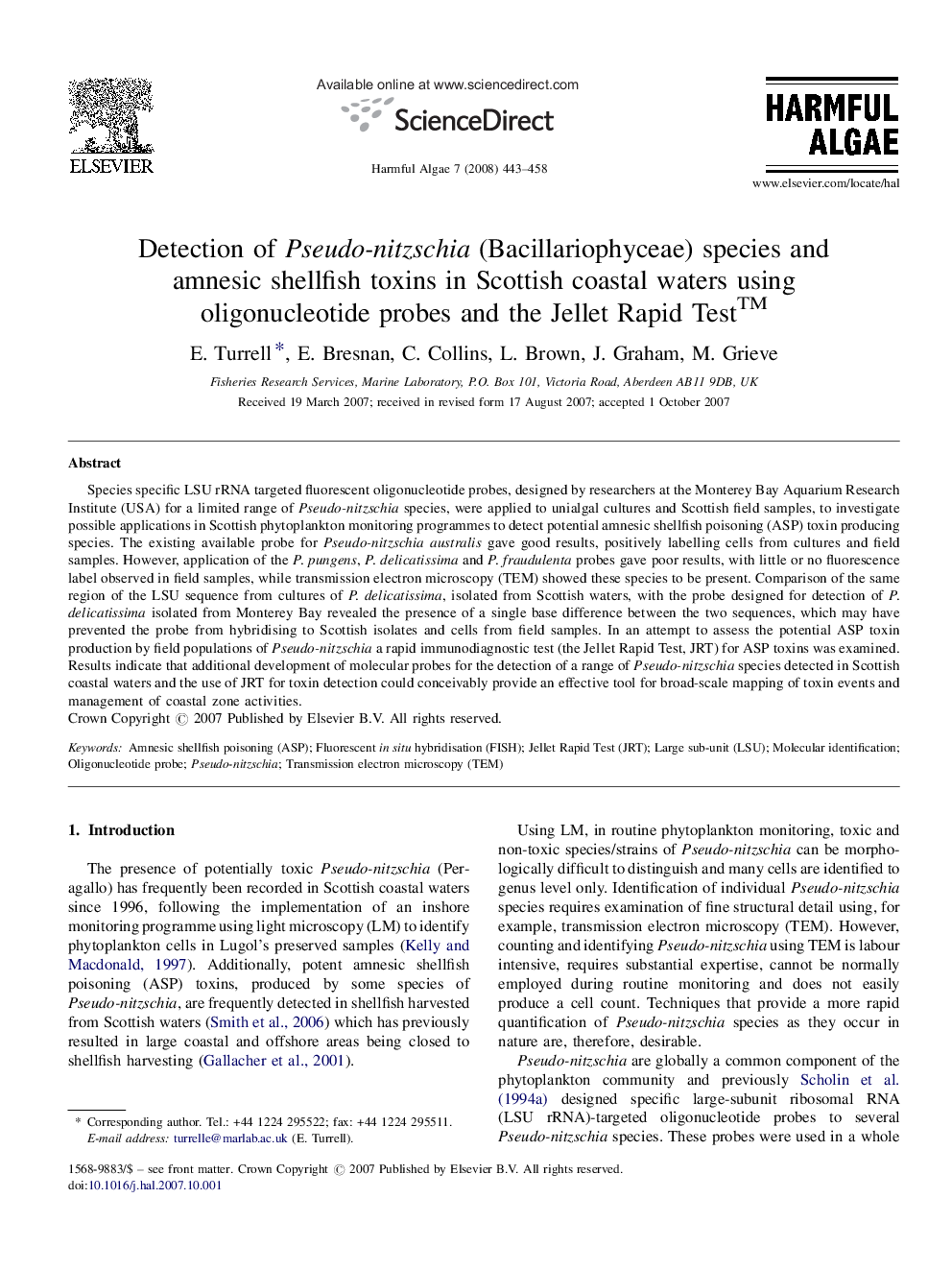| Article ID | Journal | Published Year | Pages | File Type |
|---|---|---|---|---|
| 4546051 | Harmful Algae | 2008 | 16 Pages |
Species specific LSU rRNA targeted fluorescent oligonucleotide probes, designed by researchers at the Monterey Bay Aquarium Research Institute (USA) for a limited range of Pseudo-nitzschia species, were applied to unialgal cultures and Scottish field samples, to investigate possible applications in Scottish phytoplankton monitoring programmes to detect potential amnesic shellfish poisoning (ASP) toxin producing species. The existing available probe for Pseudo-nitzschia australis gave good results, positively labelling cells from cultures and field samples. However, application of the P. pungens, P. delicatissima and P. fraudulenta probes gave poor results, with little or no fluorescence label observed in field samples, while transmission electron microscopy (TEM) showed these species to be present. Comparison of the same region of the LSU sequence from cultures of P. delicatissima, isolated from Scottish waters, with the probe designed for detection of P. delicatissima isolated from Monterey Bay revealed the presence of a single base difference between the two sequences, which may have prevented the probe from hybridising to Scottish isolates and cells from field samples. In an attempt to assess the potential ASP toxin production by field populations of Pseudo-nitzschia a rapid immunodiagnostic test (the Jellet Rapid Test, JRT) for ASP toxins was examined. Results indicate that additional development of molecular probes for the detection of a range of Pseudo-nitzschia species detected in Scottish coastal waters and the use of JRT for toxin detection could conceivably provide an effective tool for broad-scale mapping of toxin events and management of coastal zone activities.
